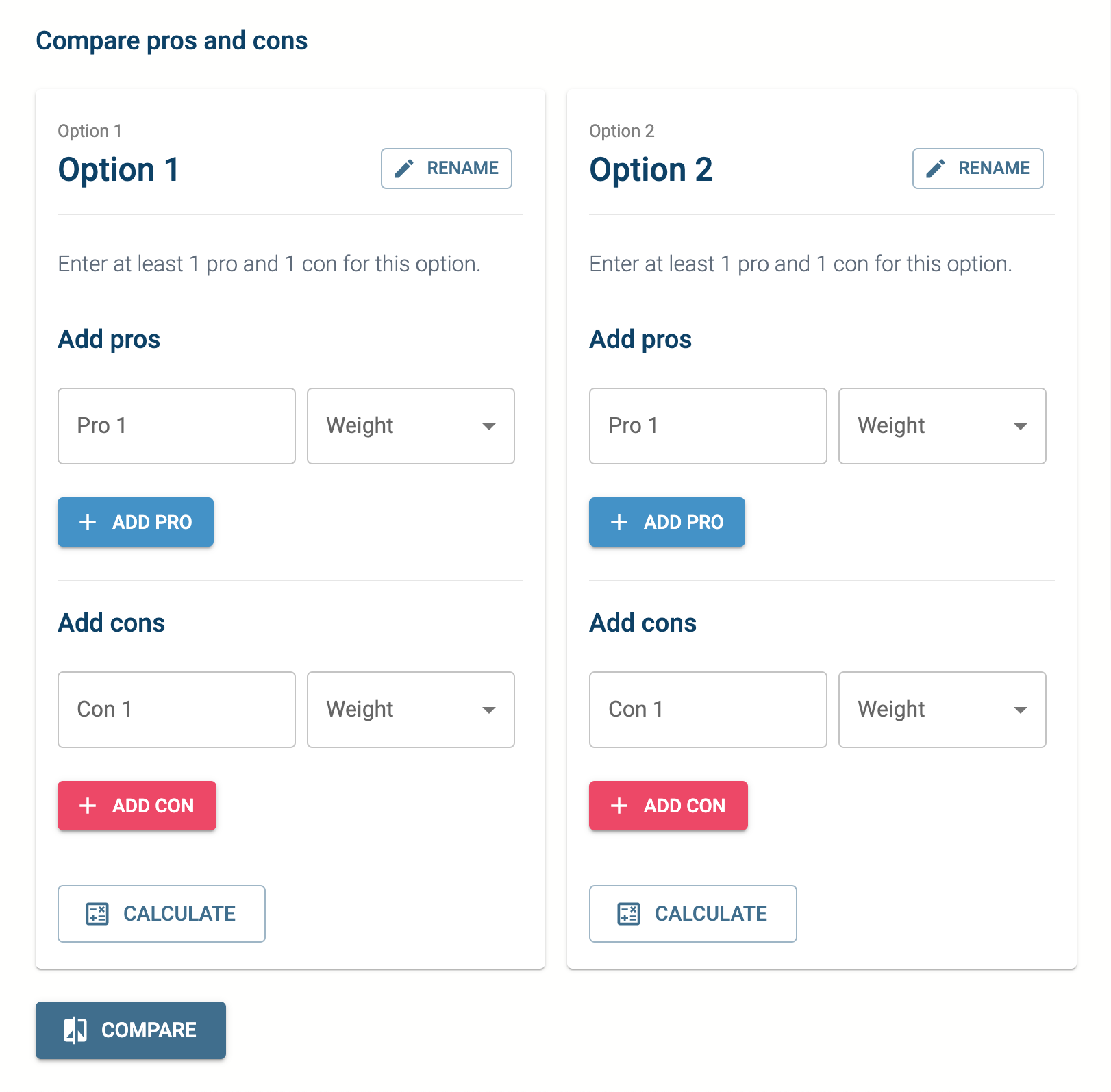History of pros and cons
According to the Oxford English Dictionary, the term ‘pros and cons’ is an abbreviation of the Latin phrase pro et contra, meaning ‘for and against’, and has been used in the abbreviated form since the 16th century.
However, the habit of writing down aspects for and against a specific course of action has been around for as long as humans have been able to draw and communicate.
As our need to survive the harsh elements and against the attack of other creatures as well as other humans, we always had instinctively evaluate pros and cons even before we were able to articulate and document it.

Analysing pros and cons is an innate human ability
First known documentation of pros and cons
Although human have been pondering pros and cons when making decision for hundreds of years, the first known use of a pros and cons list is from 1772, when Benjamin Franklin advised his friend and fellow scientist Joseph Priestley to “divide half a sheet of paper by a line into two columns, writing over the one Pro, and over the other Con.”

Benjamin Franklin is regarded as the "father" of the pros and cons analysis
How different cultures analyse pros and cons
On Western culture, the pros and cons analysis has become an essential tool post the Industrial Revolution, with specialisation and segreagation of duties and the rise of the management profession.
In management, pros and cons analysis is a popular tool used in:
- Product Strategy, when deciding to add new features or products
- Process strategy, when choosing between various inputs and processes, as well as retrospectively assessing outcomes.
- Customer analysis, to outline and measure impact to customers
- Finance strategy, for decision around pricing and cashflow strategy
- And for any other objective
On Eastern cultures, tradition has generally played a stronger role until recent times, with social hierarchy and relashionships having a stronger weight on management practices. While the pros and cons analysis has always been present in Eastern cultures, its use has been adopted more slowly in the corporate world.
However, in a more connected world, management practices are now shared globally, and the Western management model has become the most popular method, and is studied by people from all over the world.
Using the pros and cons calculator
If you want to save time and have a visual representation of your comparison, try our pros and cons calculator.

The pros and cons calculator saves the hassle of pen and paper when creating your pros and cons list.
It features visual charts so you can easily spot the best option based on the pros and cons you enter, plus the option to add as many pros share your pros and cons with friends and co-workers.